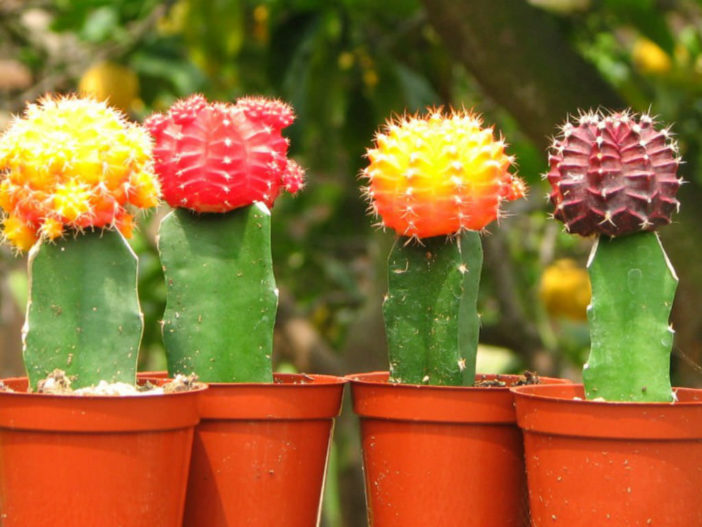When people see these unusually colored cacti, they are often mistaken for flowers. But in fact, they are two different species of cacti grafted together.
The brightly colored cactus that sits on top is a mutant variation of a standard cactus. Eventually, if a mutant pup is created in the wild, it would detach from the parent plant and sadly die as it cannot photosynthesize. It can not photosynthesize because it has no chlorophyll (green pigments), which is essential in photosynthesis. So, for a mutant pup to survive, we must find other means to give it nutrients. This is where the grafting comes in.
Rootstock plants, which can photosynthesize normally, are what the mutant pups are grafted onto. They can provide enough nutrients for themselves and their grafted partner, allowing both to survive. Common rootstocks used in grafting cacti include species of Hylocereus, Myrtillocactus geometrizans, Trichocereus pasacana, Harrisia jusbertii, Cereus peruvianus, and many more.
Most colorful mutants you will see around are derived from Gymnocalycium mihanovichii and Lobivia silvestrii variegated forms. However, the possibilities of grafting are endless and not just limited to mutants.

How to Care for Grafted Cacti
Light: Place these guys indoors or sheltered under verandas or patios, as the rootstock is sensitive to the cold and frosts. They need partial sun, so next to a window is the perfect location if they are indoors.
Water: Very little maintenance is required for these guys to thrive. In fact, one of the main reasons grafted cacti suffer is overwatering. Water them sparingly, only when the soil is dry. This can take anywhere from a week to a month, depending on location, time of year, and environmental factors. Water them thoroughly, and then let the water drain. If you are using saucers, ensure to empty them after each watering.
Source: fickleprickles.com.au
Links
- Succupedia: Browse succulents by Scientific Name, Common Name, Genus, Family, USDA Hardiness Zone, Origin, or cacti by Genus
